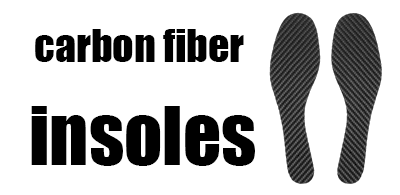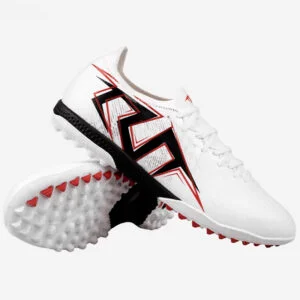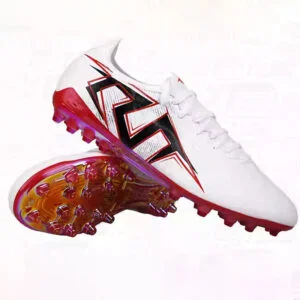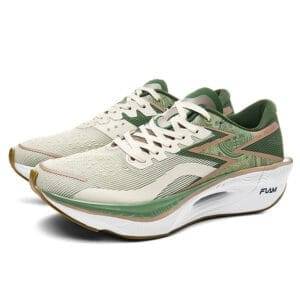In recent years, carbon plated running shoes have revolutionized competitive running, helping athletes break world records in marathons, half-marathons, and even 5K races. From Eliud Kipchoge’s sub-2-hour marathon to everyday runners achieving personal bests, these high-performance shoes are changing the game.
But what makes them so special? And are they worth the investment for your next race—whether it’s a marathon, half marathon, or 5K?
In this guide, we’ll explore:
✔ Why carbon plate shoes dominate elite racing
✔ How they compare to traditional running shoes
✔ Where carbon fiber insoles fit into the equation
By the end, you’ll know whether these shoes are right for you—and how to maximize your performance with the right gear.
1. Why Carbon Plated Running Shoes Are a Game-Changer
The Science Behind Carbon Plate Technology
Carbon plated running shoes feature a rigid carbon fiber plate embedded in the midsole, working alongside advanced foam (like Nike’s ZoomX or Adidas’ Lightstrike Pro) to:
Increase energy return (up to 4% more efficiency than traditional shoes)
Reduce muscle fatigue by propelling you forward with each stride
Improve running economy, helping you maintain speed longer
Record-Breaking Performance
Since Nike introduced the Vaporfly in 2017, carbon plate shoes have dominated major races:
Marathons: Eliud Kipchoge’s 1:59:40 marathon (wearing Alphaflys)
Half Marathons: Women’s world record broken multiple times in carbon-plated shoes
5Ks: Elite runners consistently choose carbon plates for speed
Are They Worth It for Amateur Runners?
Yes! Studies show that even non-elite runners benefit from carbon plate shoes, with:
Faster finish times (2-4% improvement)
Less leg fatigue in long races
Better race-day performance compared to daily trainers
3. Carbon Plate Shoes vs. Traditional Running Shoes
| Feature | Carbon Plate Shoes | Traditional Shoes |
|---|---|---|
| Energy Return | ⭐⭐⭐⭐⭐ (Highest) | ⭐⭐⭐ (Moderate) |
| Weight | ⭐⭐⭐⭐ (Light) | ⭐⭐⭐ (Varies) |
| Durability | ⭐⭐ (Foam wears out) | ⭐⭐⭐⭐ (Longer-lasting) |
| Price | $$$ ($200-$300) | $$ ($100-$150) |
| Best For | Race day speed | Daily training |
Verdict: Carbon plate shoes are ideal for racing, while traditional shoes are better for training.
4. Can Carbon Fiber Insoles Enhance Your Running?
While carbon plated running shoes are unbeatable for race day, carbon fiber insoles offer a cost-effective alternative for runners who:
Don’t want to buy new shoes
Need extra arch support
Want to improve energy return in daily trainers
Benefits of Carbon Fiber Insoles
✔ Affordable upgrade ($50-$150 vs. $200+ for shoes)
✔ Fits any shoe (use in trainers or racing flats)
✔ Customizable stiffness for different distances
Best for:
Runners who already have good marathon shoes but want a boost
Athletes who rotate between multiple pairs
Those who need extra support for half marathon racing shoes
👉 Upgrade your current shoes with high-performance insoles from CarbonFiberInsoles.shop
5. Are Carbon Plate Shoes Right for You?
Choose Carbon Plated Running Shoes If:
✅ You’re racing a marathon, half marathon, or 5K
✅ You want the fastest possible finish time
✅ Budget isn’t a concern
Stick with Traditional Shoes + Carbon Insoles If:
✅ You want better performance without buying new shoes
✅ You need versatility for training and racing
✅ You prefer a more budget-friendly option
Final Verdict: Should You Get Carbon Plate Shoes?
If you’re serious about setting PRs in marathons, half marathons, or 5Ks, carbon plated running shoes are worth the investment. They provide unmatched energy return and speed, helping you run faster with less effort.
However, if you’re not ready to splurge on new shoes, carbon fiber insoles from CarbonFiberInsoles.shop can still enhance your performance at a fraction of the cost.
Ready to Dominate Your Next Race?
Shop the best carbon plate shoes for your distance
Or boost your current shoes with carbon insoles
Either way, you’ll be faster, stronger, and race-ready in 2025!





